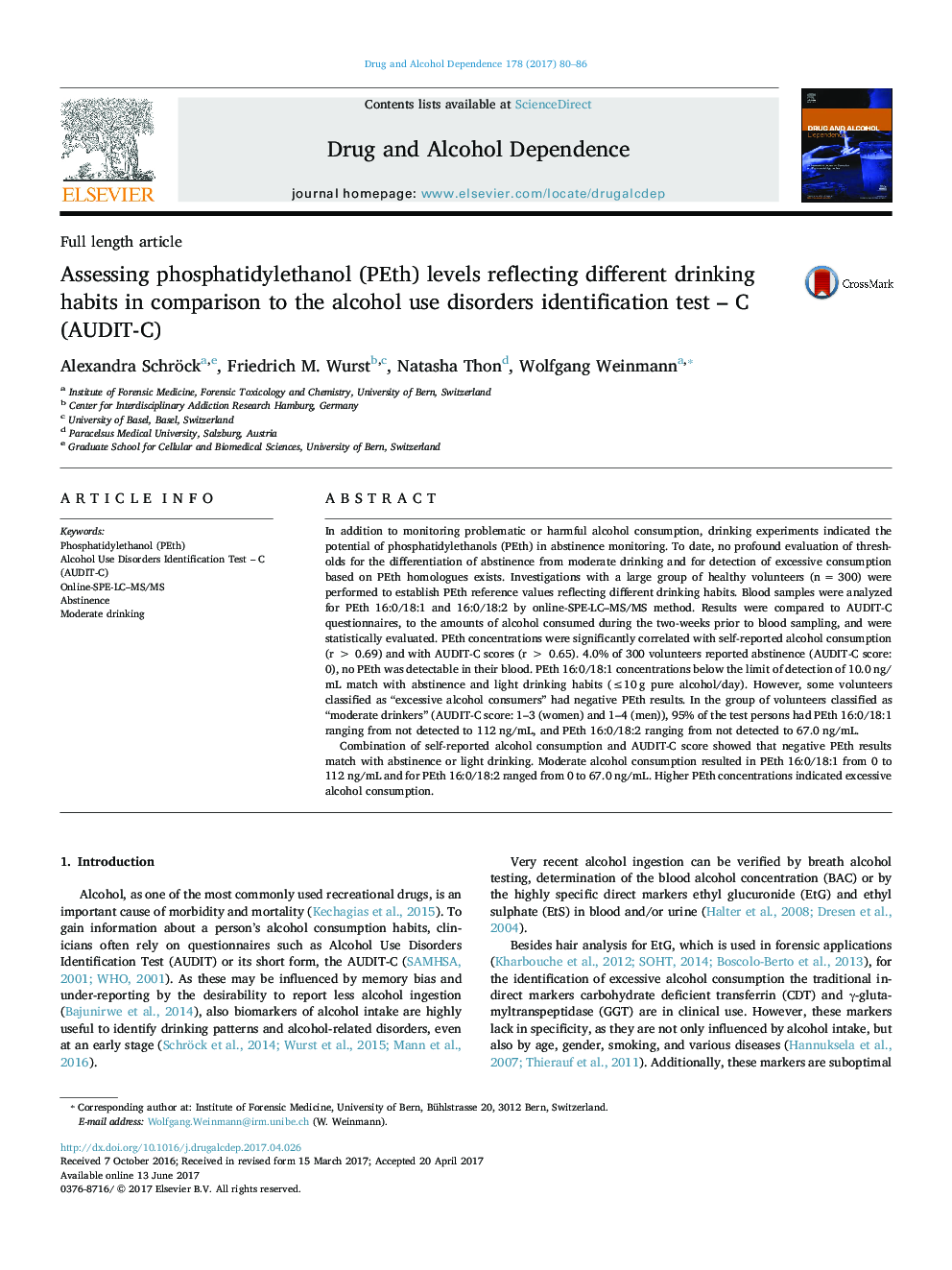| کد مقاله | کد نشریه | سال انتشار | مقاله انگلیسی | نسخه تمام متن |
|---|---|---|---|---|
| 5120335 | 1486113 | 2017 | 7 صفحه PDF | دانلود رایگان |

- The potential of phosphatidylethanols (PEth) concentrations correlates with self-reported measures of alcohol consumption.
- PEth concentrations correlate with the Alcohol Use Disorders Identification Test (AUDIT-C) scores, as well.
- Negative PEth results correlate with abstinence or light drinking.
- 95% of the volunteers were classified as “moderate drinkers” by AUDIT-C and PEth.
- Higher PEth concentrations indicate excessive alcohol consumption.
In addition to monitoring problematic or harmful alcohol consumption, drinking experiments indicated the potential of phosphatidylethanols (PEth) in abstinence monitoring. To date, no profound evaluation of thresholds for the differentiation of abstinence from moderate drinking and for detection of excessive consumption based on PEth homologues exists. Investigations with a large group of healthy volunteers (n = 300) were performed to establish PEth reference values reflecting different drinking habits. Blood samples were analyzed for PEth 16:0/18:1 and 16:0/18:2 by online-SPE-LC-MS/MS method. Results were compared to AUDIT-C questionnaires, to the amounts of alcohol consumed during the two-weeks prior to blood sampling, and were statistically evaluated. PEth concentrations were significantly correlated with self-reported alcohol consumption (r > 0.69) and with AUDIT-C scores (r > 0.65). 4.0% of 300 volunteers reported abstinence (AUDIT-C score: 0), no PEth was detectable in their blood. PEth 16:0/18:1 concentrations below the limit of detection of 10.0 ng/mL match with abstinence and light drinking habits (â¤10 g pure alcohol/day). However, some volunteers classified as “excessive alcohol consumers” had negative PEth results. In the group of volunteers classified as “moderate drinkers” (AUDIT-C score: 1-3 (women) and 1-4 (men)), 95% of the test persons had PEth 16:0/18:1 ranging from not detected to 112 ng/mL, and PEth 16:0/18:2 ranging from not detected to 67.0 ng/mL.Combination of self-reported alcohol consumption and AUDIT-C score showed that negative PEth results match with abstinence or light drinking. Moderate alcohol consumption resulted in PEth 16:0/18:1 from 0 to 112 ng/mL and for PEth 16:0/18:2 ranged from 0 to 67.0 ng/mL. Higher PEth concentrations indicated excessive alcohol consumption.
Journal: Drug and Alcohol Dependence - Volume 178, 1 September 2017, Pages 80-86